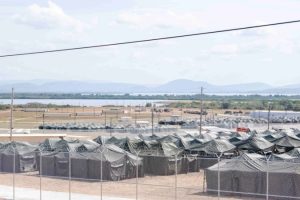( Spanish) – While most South American economies will complete three years of uninterrupted growth in their gross domestic product (GDP), Argentina will experience two consecutive periods of contraction in its total annual production, with the aggravating factor that, according to projections for 2024, it would be the only economy in the subcontinent to fall, after having contracted in 2023, which implies a lower comparison base. In other words, while the other South American countries grow consecutively, that is, establish a higher comparison base, Argentina contracts after declining, without even a rebound.
These conclusions arise from the Economic Survey of Latin America and the Caribbean 2024prepared by the Economic Commission for Latin America and the Caribbean (ECLAC), which is part of the United Nations (UN).
This document projects that the Argentine economy will fall by 3.6% this year, after having decreased by 1.6% last year. Peru, whose economy contracted by 0.6% in 2023, would be the other South American country that would match the situation of consecutive decline, but in 2024 it would grow by 2.6%, according to ECLAC.
The report indicates that the Venezuelan economy could be the fastest growing this year, with a rate of 5%, after increases in 2022 (12%) and 2023 (3%).
Second place goes to Paraguay, whose economy has also been on the rise for the past three years. In 2024, its GDP is expected to rise by 3.8%, after having increased by 4.7% last year.
Uruguay will take third place among the fastest-growing economies in South America, if ECLAC’s projection comes true, which predicts an increase of 3.6% this year, after a slight rise of 0.4% in 2023.
The list from highest to lowest projected growth is completed by Chile (2.6%); Peru (2.6%); Brazil (2.3%); Ecuador (1.8%); Bolivia (1.7%) and Colombia (1.3%).
Looking at the rest of Latin America and the Caribbean, the only country to follow Argentina in its consecutive decline would be Haiti, whose economy had already fallen by 1.9% in 2023 and is expected to contract by 3% this year. In other words, percentage-wise, the GDP of the poorest country in the region will decline less than that of Argentina in 2024.
A combination of a 54% devaluation of the Argentine peso last December, inflation that is declining but still hovering above 4% per month, and a recession that is already reflected in official data explain the decline in output in the country.
The contraction in activity deepened during the first half of 2024, according to the latest report on the progress of the level of activity published last week by the National Institute of Statistics and Census (Indec). Although the pace of the decline slowed compared to previous periods, the economy contracted by 1.7% in the second quarter of this year compared to the same period last year. It also fell by 1.7% compared to the first quarter of 2024. Consequently, the decline amounts to 3.4% year-on-year in the first half of this year, close to the 3.6% contraction of Argentine GDP that ECLAC projects for all of 2024.
The engines of the Argentine economy continue to be in crisis. Private consumption fell by 9.8% year-on-year in the second quarter of this year and by 4.1% compared to the first quarter of 2024. Public consumption also fell (-6%), and investment is not driving the product either. According to Indec, gross fixed capital formation fell by 29.4% year-on-year in the second quarter and by 9.1% seasonally adjusted.
The only segment of demand that grew quarter-on-quarter was exports (3.9%), while the rest contracted. This also explains the evolution of Argentina’s GDP for this year.
The Minister of Economy, Luis Caputo, had indicated in July that the minimum level of activity for the year had been reached in June and that businessmen told him that they saw “clear signs of recovery,” in statements to Radio Mitre. The Monthly Estimator of Economic Activity for July, which INDEC published in the last few hours, supported this theory. During the seventh month of the year, activity grew by 1.7% compared to June, but fell by 1.3% in the year-on-year comparison.
The Argentine economy is in a roller coaster ride. Most analysts and even the government itself assume that the economy will fall this year, while the region is consolidating in the opposite direction.


![[Img #75328]](https://thelatestnews.world/wp-content/uploads/2025/03/Alexander-von-Humboldt-the-visionary-who-connected-science-and-nature-150x150.jpg)










Add Comment